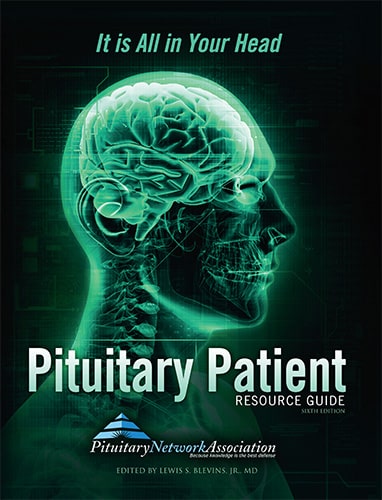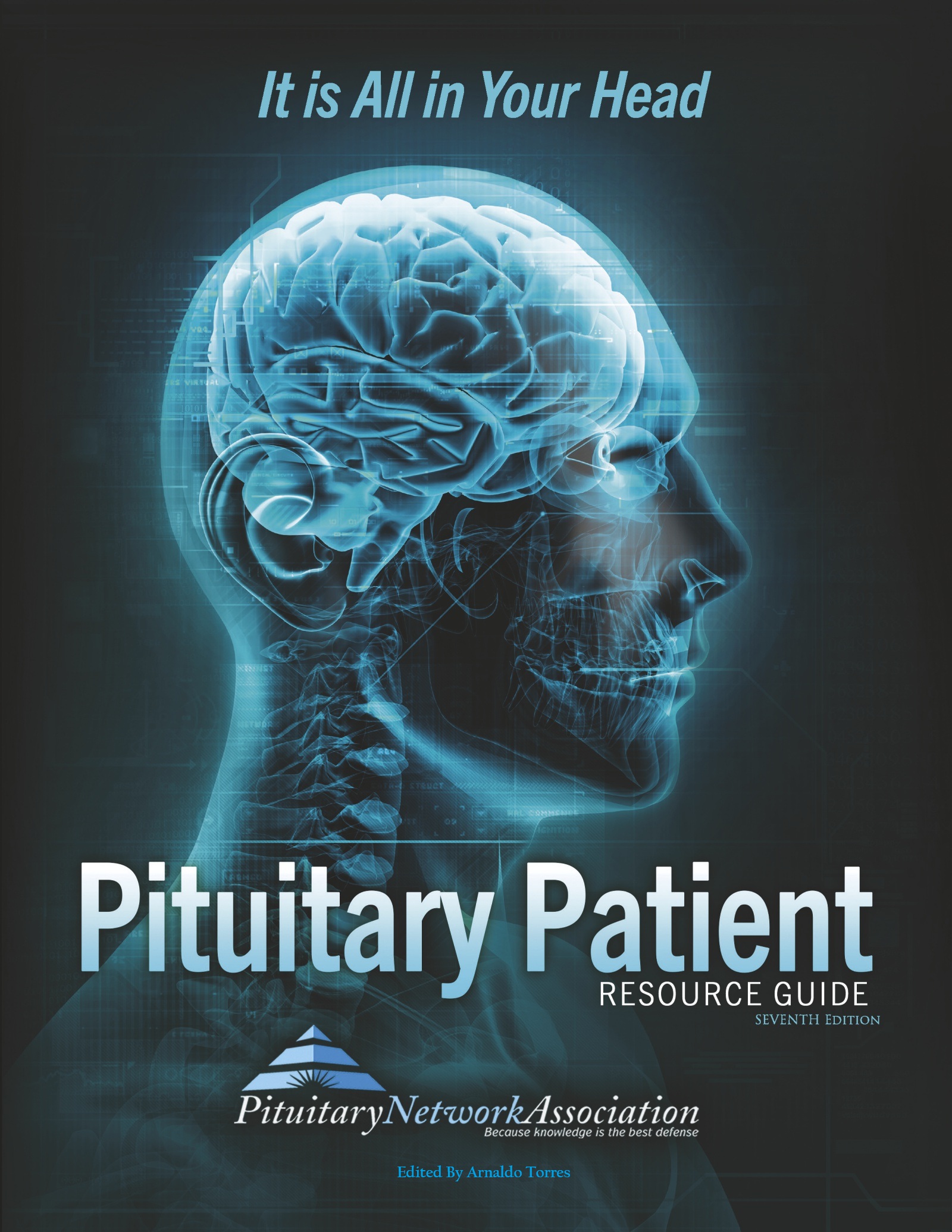News Articles February 2022
Written on 04 February 2022.
Is Pituitary Tumor Surgery Risky?
Surgery is a common treatment, and it is almost always successful IF performed by a skilled and specialized neurosurgeon. The smaller the tumor, the greater the chance the surgery will be successful. Large tumors that grow upward (into the nerves that mediate vision) or laterally (into the cavernous sinuses that contain the major arteries to the brain-the carotid arteries) increase the risk of surgery and are generally associated with a lower probability of cure. Early diagnosis and treatment is the key.
Which Hormones Are Produced And/Or Controlled By The Posterior Pituitary Or Hypothalamus?
- Oxytocin stimulates contractions of the uterus during labor and the ejection of milk during breast-feeding.
- Antidiuretic Hormone (ADH) increases reabsorption of water into the blood by the kidneys and therefore decreases urine production. Also referred to as Vasopressin.
How Do I Get Diagnosed?
Anyone suffering from a constellation of complaints/clinical findings suspicious for pituitary disease should get blood and urinary hormone levels checked and, if indicated, a brain MRI, keeping in mind that microadenomas may not show up on the x-rays. Combinations of three or more of the following may suggest the possibility of a pituitary tumor: sexual dysfunction, depression, galactorrhea, infertility, growth problems, osteoporosis, obesity (specifically central), severe vision problems, easy bruising, aching joints, carpel tunnel syndrome, disrupted menses, early menopause, muscle weakness, fatigue.
Why Are These Tumors So Common?
We don’t know because funding for benign brain tumor research is virtually nonexistent. That’s about to change. In October 2002, Congress passed the Benign Brain Tumor Cancer Registries Amendment Act, which will force hospitals, clinics and doctors to report pituitary tumor incidence rates in the data collection of cancer registries. The problem remains diagnosis. No report of incidence rates is possible without it.
Why Are Mental Health Symptoms Connected With Pituitary Disorders?
This is a complex and not completely understood area of pituitary medicine. Of course it is very logical and reasonable for anyone who has physical limitations, pain, discomfort to feel sad about a loss or change in their body functioning. Depression, which is different than sadness, is cited as a component of many chronic and/or serious physical illnesses. But pituitary disorders have a unique relationship with mental and emotional states. The chemistry of how such hormones as Prolactin and Cortisol act upon the brain is thought to either directly or indirectly causes psychological problems. There is also evidence linking emotional trauma, especially early in life, to later development of pituitary/Neuroendocrine disorders. Emotional factors are also known to affect the immune system. Thyroid hormones are also known to affect brain function and behavior and sensitive to environmental factors that cause stress. Therefore, a combination of stressful life events combined with a persons unique vulnerabilities and the powerful forces of certain hormones seem to commonly bring pituitary tumors and other Neuroendocrine disorders together with mental and emotional disturbances.
What Happens After A Tumor Is Removed/Treated?
There may be permanent loss of some or all pituitary hormones, an imbalance that can be treated with Hormone Replacement Therapy, which has been inaccurately associated with only one group of patients: post-menopausal women. HRT can replace thyroid, growth, testosterone, or adrenal hormones when those made by the pituitary to stimulate the endocrine glands are no longer produced. It can be lifesaving therapy for the many millions of patients who need to replace hormones they no longer make.
What Is A Pituitary Tumor?
A pituitary tumor is an abnormal growth of pituitary cells. Pituitary tumors can either be nonfunctional (that is they do not secrete hormones) or produce specific hormones, such as prolactin (causing infertility, decreased libido, and osteoporosis), growth hormone (causing acromegaly), ACTH (causing Cushing’s), TSH (causing hypothyroidism), or be nonfunctional (that is they do not produce hormones). These tumors behave according to their cell of origin and are named for the specific cell type affected. For example, if a tumor originates in a prolactin producing cell, the patient develops a prolactinoma-a prolactin secreting pituitary tumor that is common and usually treatable. High prolactin levels suppress production of the pituitary hormones (luteinizing hormone and follicle stimulating hormone) that stimulate production of estrogen or testosterone. Men with these tumors have low testosterone levels and lose their sex drive and eventually their masculine characteristics-hair, muscle, erections, and ability to produce sperm. Women with prolactin producing tumors often do not ovulate, experience low estrogen levels, and cease having menstrual periods. In both cases, patients with low sex hormones develop osteoporosis. It is important to remember that most pituitary tumors are benign and cancer is very rare. They have variable patterns of growth and affect different people in vastly different ways. Some are small and incidental, while others are small but cause hormone excess. Others may be rapidly growing mass lesions.
What Causes The Pituitary To Malfunction?
Tumors (overwhelmingly benign), inflammation, infections and injury can cause the gland to malfunction, as well as metastasis or spread of other tumors to the pituitary (rare). Radiation therapy to the brain can also cause normal pituitary cells to malfunction.
What Happens If The Pituitary Produces Either Too Much Or Too Little Of These Hormones?
An imbalance occurs, leading to more than a dozen disorders of the endocrine system. Deficiency of thyroid hormone, adrenal cortical hormone (cortisol) or antidiuretic hormone (vasopressin) is rapidly life-threatening. In patients with abnormalities of the other hormones, quality of life is significantly compromised.
Is “The Master Gland” Connected To The Brain?
The pituitary hangs from the hypothalamus, a part of the brain located immediately above it, by a thread-like stalk that contains both blood vessels and nerves. Hormones produced in the hypothalamus carry signals or messages to the pituitary gland. The hypothalamus serves as a “switching station” to relay signals from many different parts of the brain to the pituitary gland, which in turn transmits its own signals to various parts of the body. The pituitary is divided into a larger anterior region (adenohypophysis) and a smaller posterior area (neurohypophysis). It sits in a small pocket of bone in the base of the skull called the pituitary fossa, also known as the sella turcica, or Turkish saddle, because of the resemblance. The sella turcica is located deep within the skull, which can be imagined by drawing an imaginary line from the top of the nose through the brain to the back of the head, and from ear to ear. The point at which they intersect is where the pituitary gland sits.
Available Now!

The Pituitary Patient Resource Guide Sixth Edition is now available! Be one of the first to have the most up-to-date information. The Pituitary Patient Resource Guide a one of a kind publication intended as an invaluable source of information not only for patients but also their families, physicians, and all health care providers. It contains information on symptoms, proper testing, how to get a diagnosis, and the treatment options that are available. It also includes Pituitary Network Association's patient resource listings for expert medical care.

Xeris Pharmaceuticals is valued member of the PNA










